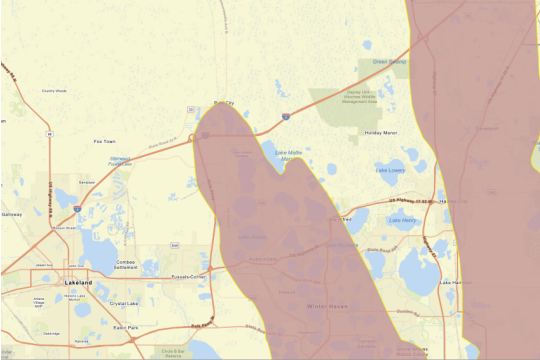By Brett Bultemeier
EDITOR’S NOTE: This is the second in a series of two articles on pesticide label changes related to the Endangered Species Act.

In the May issue of Specialty Crop Grower, “Endangered Species Act compliance for herbicide application” discussed the need to check your points related to erosion and runoff. If you haven’t read that article, go back and do so, and this article will make much more sense. The May article explained how compliance really doesn’t require a lot of change, just a little more documentation.
Bulletins Live! Two
This article focuses on another part of the label for Liberty Ultra herbicide. It is found in section 11 of the label but also more explicitly in section 12, Endangered and Threatened Species Protection Requirements. A label that includes this will list the requirements to check on the Bulletins Live! Two website (is.gd/BulletinsLive).
The website includes a map that shows areas that have extra requirements or restrictions for using a product. This language exists on many labels already and has been a requirement for some time. You might find this language in the Environmental Hazards section on older labels or at the beginning of the Directions for Use on other labels. Here are key points to know:
- You must check the website and map because websites listed on the label count as an official part of the label.
- You can check the website up to six months in advance of application.
- If you are inside the pink shaded area on the map, this is called a PULA (pesticide use limitation area). Print the bulletin and follow its instructions in addition to the label. (Figure 1)
- Keep a record of that bulletin. The Environmental Protection Agency (EPA) has not provided guidelines on how long and if you must keep a record, but keeping it stored with all your other spray records is advised for future compliance.
You only need to check the website if the label directs you to. If a label requires you to check it, simply use your EPA registration number found on the front of your label and enter that into the map. Select your application month, up to six months in advance, and zoom in to your farm area on the map. From there, print your bulletin by clicking the green box in the upper right corner.
If your field/plot is outside the pink area, print your bulletin proving you were not in a PULA when you checked, follow the label and farm. If you are in the pink area, print the bulletin, follow its instructions and the label instructions, keep your records and do your job farming.
These bulletins vary widely and include things like extra buffer requirements, limitations on the months that the product can be used, rate reductions and outright bans. For now, it appears many new labels are including this language even if there aren’t any active PULAs. Liberty Ultra, for instance, requires you to check for a bulletin, and no bulletins are currently active in the entire United States. You will just have to continually check if your label requires it.
Let’s Review
That is a lot of new information, but let’s review what the process now looks like for using pesticides:
- Read the label. (Some things never change.)
- Look for new drift language and determine how you might be able to reduce buffers. (An app might be coming to assist with this.)
- Are there mitigation points required? (This is covered in part one of this article series.)
- No, use your product according to the label and make applications.
- Yes, ensure you have enough points, which most farms will.
- Now there is a website (epa.gov/pesticides/mitigation-menu) to assist.
- Are there endangered species requirements?
- No, follow the label and make applications.
- Yes, check the Bulletins Live! Two website.
- Outside a PULA, print/keep the proof and make applications.
- Inside a PULA, print/keep, follow the instructions and make applications.
- Keep checking pesticide labels as changes will continue to be made.
Here is the good news: Even amongst all the changes, you are unlikely to make massive changes to your practices, at least for now. There are still more changes to come, but right now nobody is clear when or how that might happen. As it exists today, most growers simply need to document what they are doing by keeping records and keep doing what they do — growing high quality fruits and vegetables.
Brett Bultemeier is the director of the University of Florida Institute of Food and Agricultural Sciences Pesticide Information Office.
.









